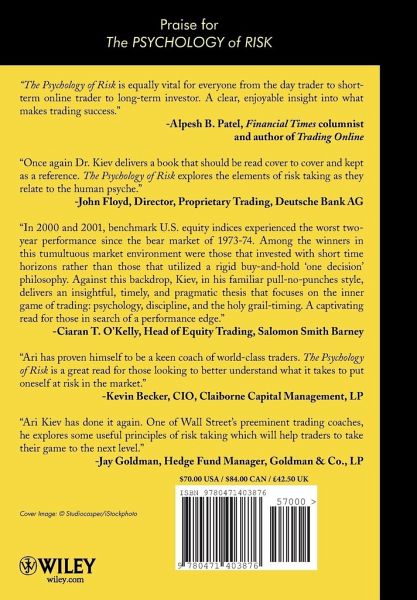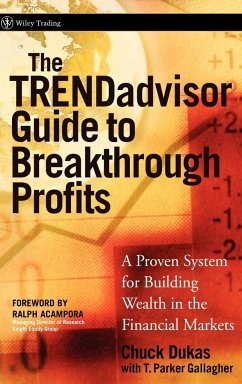
The Psychology of Risk
Mastering Market Uncertainty

PAYBACK Punkte
27 °P sammeln!
In "The Psychology of Risk": "Mastering Market Uncertainty", renowned psychiatrist and trading coach Ari Kiev builds on his internationally acclaimes books "Trading to Win" an "Trading in the Zone" to explore the psychology behind risk an trading. By focusing on your appetite for risk-taking, your ability to manage and adapt to risk, and your pathological patterns of risk-taking, Kiev shows you how to overcome the psychological obstacless of risk that undermine your decision-making process and abilityx to cut losing trades and stick with winners.
One of the financial world's most respected experts on the psychology of risk provides a revolutionary risk management model
Over the past three decades investors have adopted all varieties of complex quantitative systems for quantifying and managing risk. Yet, sophisticated investors and money managers continue to suffer record losses in today's increasingly volatile markets. This book bridges the gap between investor psychology and quantitative risk management with a revolutionary risk management program that virtually any trader or investor can easily adapt to their goals and personalities. Using numerous fascinating real-life case studies, Dr. Kiev illustrates the various psychological and emotional traps to which even the savviest investors can fall victim. He develops a dynamic new risk management model that combines quantitative models and money management techniques. He also provides rigorous guidelines that will help readers answer such crucial questions as: How much should I trade? How much risk can I handle? and When should I get out?
Over the past three decades investors have adopted all varieties of complex quantitative systems for quantifying and managing risk. Yet, sophisticated investors and money managers continue to suffer record losses in today's increasingly volatile markets. This book bridges the gap between investor psychology and quantitative risk management with a revolutionary risk management program that virtually any trader or investor can easily adapt to their goals and personalities. Using numerous fascinating real-life case studies, Dr. Kiev illustrates the various psychological and emotional traps to which even the savviest investors can fall victim. He develops a dynamic new risk management model that combines quantitative models and money management techniques. He also provides rigorous guidelines that will help readers answer such crucial questions as: How much should I trade? How much risk can I handle? and When should I get out?












